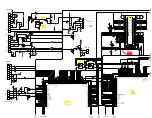
Order No. 2104 ..
-
"received temperature value"
The actual temperature is determined solely via a temperature value received from the bus.
In this case, the sensor must either be a KNX room thermostat coupled via the
2-byte object "Received temperature" or a controller extension with temperature detection.
The room temperature controller can request the current temperature value cyclically. For
this purpose, the parameter "Request time of the received temperature value" must be set
to a value > "0". The request interval can be configured within the limits of
1 minute to 255 minutes.
After a device reset the room temperature controller will first wait for a valid temperature
telegram until the feedback control starts and a command value, if applicable, is output.
-
"internal received temperature value"
This setting is used to combine the selected temperature sources. The sensors can either
be a KNX room thermostat coupled via the 2-byte object "received temperature" or
controller extensions with temperature detection.
With the setting "Received temperature value" the room temperature controller can request
the current temperature value cyclically. For this purpose, the parameter "Request time of
the received temperature value" must be set to a value > "0". The request interval can be
configured within the limits of 1 minute to 255 minutes. After a device reset the room
temperature controller will first wait for a valid temperature telegram until the feedback
control starts and a command value, if applicable, is output.
When evaluating, the real actual temperature is made up from the two respective
measured temperature values. At the same time, the weighting of the temperature values is
defined by the parameter "Measured value formation to receive internally". Depending on
the different locations of the sensors or a possible non-uniform heat distribution inside the
room, it is thus possible to adjust the actual temperature measurement. Often, those
temperature sensors that are subject to negative external influences (for example,
unfavourable location because of exposure to sun or heater or door / window directly next
to it) are weighted less heavily.
Example: a room temperature controller is installed next to the entrance to the room
(internal sensor). An additional wired temperature sensor has been mounted on an inner
wall in the middle of the room below the ceiling.
Internal sensor: 21.5 °C
External sensor: 22.3 °C
Determination of measured value: 30 % to 70 %
-> T
Result internal
= T
internal
· 0.3 = 6.45 °C,
-> T
Result external
= T
external
= 22.3 °C · 0.7 = 15.61 °C
-> T
Result actual
= T
Result internal
+ T
Result external
= 22.06 °C
Calibrating the measured values
In some cases during room temperature measurement, it may be necessary to adjust the single
temperature values. Adjustment becomes necessary, for example, if the temperature measured
by the sensors stays permanently below or above the actual temperature in the vicinity of the
sensor. To determine the temperature deviation, the actual room temperature should be
detected with a reference measurement using a calibrated temperature measuring device.
The parameters "Internal sensor calibration" and "Calibration of received temperature value" in
the parameter node "Sensor -> Temperature measurement" can parameterise the positive
(temperature increase, factors: 1 ... 127) or negative (temperature decrease, factors -128... -1)
temperature calibration in levels of 0.1 K. Thus, the calibration is made only once statically and
is the same for all operating modes of the controller.
i
The measured value has to be increased, if the value measured by the sensor lies below
the actual room temperature. The measured value has to be decreased, if the value
measured by the sensor lies above the actual room temperature.
Page 100 of 171
Software "KNX CO2 sensor"
Functional description
















































